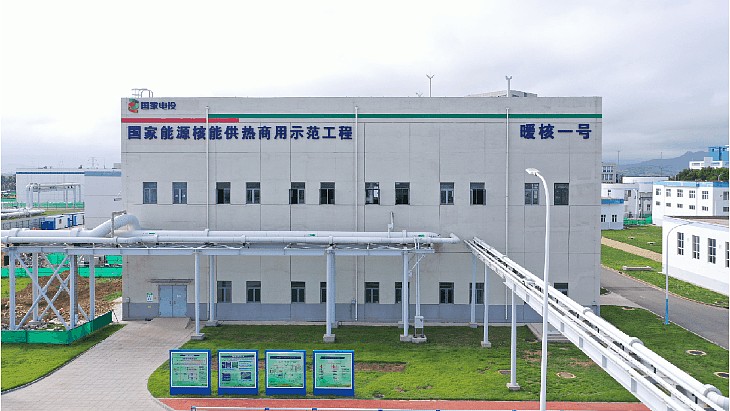According to State Power Investment Corporation (SPIC) - parent company of Shandong Nuclear Power Company - the district heating network is expected to supply 4.6 million gigajoules of heat, which will save 410,000 tonnes of coal consumption and reduce CO2 emissions by 760,000 tonnes. It plans to be able to heat the city of Qingdao - population of more than 10 million - in 2026.
The district heating scheme at the Haiyang plant, which began as a demonstration project to show the feasibility of such a scheme, was put into operation in 2019. Each year it has been expanded, with heating capacity rising from an initial 31.5 MW to 1134 MW, and the area covered increasing 20-fold from an initial 700,000 square metres.
SPIC says "the safe and stable operation of the five heating seasons fully verified that the engineering technology is replicable, the business model is promotable, and the cost-effectiveness is sustainable. It provides a good model for large-scale cogeneration of nuclear power, and has led to the follow-up implementation at multiple nuclear power plants".
It says that over the past five winters the district heating scheme has provided 9.01 million GJ of heat, saving 810,000 tonnes of coal and reducing carbon dioxide emissions by 1.49 million tonnes. It says that the air quality during winter in Haiyang "has improved significantly" and the area where the sea temperature is 2C hotter around the nuclear power plant has reduced by 41 hectares since the heating scheme's start.
Haiyang Nuclear Power Plant currently features two Westinghouse AP1000 units and SPIC says it is the world's largest such nuclear power plant cogeneration project. It says that with the commissioning of subsequent units - two CAP1000 units are currently under construction and up to four more are proposed - it is expected to provide heating for the city of Qingdao in 2026 and the long-term heating capacity will reach 200 million square metres.
Background
District heating schemes aim to make the most of heat produced during the power-generating operations of a nuclear plant - heat which might otherwise not be used.
In this scheme Shandong Nuclear Power Company - a subsidiary of SPIC and the owner of the Haiyang plant - has cooperated with local thermal company Fengyuan Thermal Power in a system that extracts non-radioactive steam from the secondary circuit of the two Haiyang AP1000 units, which is then fed through a multi-stage heat exchanger in an on-site heat exchange station. This heat is then fed to an off-site heat exchange station belonging to Fengyuan Thermal Power, from where heated water flows through municipal heating pipes to consumers.
There are other projects in China as well as elsewhere - Russia, several East European countries, Switzerland and Sweden have all had nuclear-fuelled district heating schemes. Heat from nuclear power plants has also been sent to industrial sites in several countries and many of the proposed small and micro modular reactors under development are geared towards cogeneration of power and heat.





_30199.jpg)
_72306.jpg)

_49562.jpg)





